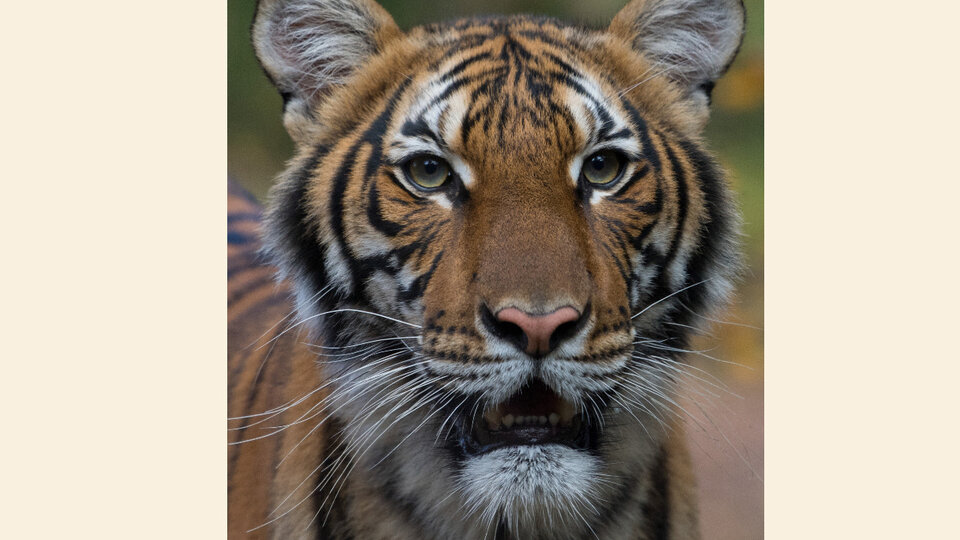A tigress at the Bronx Zoo in New York tested positive for coronavirus. It is believed that he contracted the virus from a caregiver who had no symptoms. It is not the first time that an animal tests positive for the new coronavirus
. At the end of March, it was discovered in Belgium that a cat whose owner was infected contracted Covid-19, and the same happened with two dogs in Hong Kong. However, the United States Department of Agriculture (USDA, for its acronym in English) recalled that “there is no evidence that animals play a role in transmitting Covid-19 to people. “
According to the information provided by the Zoo, the malay tigress four years old, named Nadia, He presented symptoms of the disease, as did his sister Blue, two Amur tigers and three African lions , who developed dry cough. In a statement, those responsible for the zoo said that: “We test the feline taking all precautions and we will make sure that any knowledge we obtain about Covid-19 will contribute to understanding about this new coronavirus.”
“It is unknown how this disease will develop in large cats as different species may react differently to new infections, but we will continue to monitor them closely, “they added.
Positive COVID-19 test for tiger It was performed at the New York State Diagnostic Laboratory at Cornell University and at the Veterinary Diagnostic Laboratory at the University of Illinois College of Veterinary Medicine. Then they were confirmed by the National Veterinary Services Laboratory of the Department of Agriculture (USDA).
Regarding the evolution of animals, the specialists explained that “Although they have experienced decreased appetite, the felines are doing well under veterinary care and they are cheerful, alert and interact with their caregivers. “
The four zoos and the aquarium in New York City, the main epicenter of the pandemic in the United States, where the death toll from the virus exceeded 4,000, have been closed since March 16. Regardless, in the face of the tigress case, the Bronx Zoo said preventive measures were taken for keepers and for all cats in the city’s zoos.
The veterinarian Fidel Baschetto, university professor and president of the Wild Fauna Chapter of the Veterinary Medicine Society (Someve), recalled that the pathogen that was detected in Wuhan, China, and that arose from animals, although it is not new – in 2002-2003 SARS-CoV-1 was known – this SARS-CoV -2 whose clinical expression is Covid-19 is a new presentation that comes with many questions.
“Still today we cannot elucidate how it appeared and what were the wild reservoirs that generated the 1, so with 2 everything is in review. In this context, we can say that species susceptibility is a process to review, “explained Baschetto.”With the data out there, it can be said that there is a susceptibility in the felidae family, and less susceptibility in the canines. But all this is new, nothing can be very restrictive. In any case, what there is no evidence of is that the virus has passed from a feline to a dog to a human, “he added.
To understand the difficulty posed by the issue, Baschetto recalled that when Sars-CoV-1 emerged in 2002/3 in China the civet was blamed -a weasel-like animal- to be the intermediary animal responsible for the transmission of the virus. “7000 farm civets that were for human consumption were killed. It was only in 2008 that transmission was found to have been the other way around: from humans to animals. For there to be an interspecific jump, there must be an intermediary. At that time it was believed that it was the civet, now it is spoken of the pangolin. There is no scientific evidence “, he pointed.
For now, everything points to batsexplained the veterinarian, because they are considered the natural host of the various coronaviruses. “Bats are animals that have a high metabolism and a great immune system, which makes them sustain the virus without developing it. AND there is impressive biological information that must be elucidated”. Anyway, Baschetto remarked, “These types of bats are found from Australia to South Asia.”
– .


:strip_exif()/i/2001877459.jpeg?f=fpa)